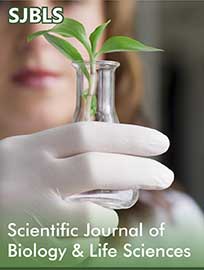 Mini Review
Mini Review
Natural Resource Use, Misuse, Strategy, Policy toRegeneration and Conservation in Ethiopia. In Case ofSoil and Water
Tsegamariam Dula* and Tadele Alemayhu
Department of Agricultural Economics, Ethiopia
Tsegamariam Dula, Department of Agricultural Economics,Wolkite University, Ethiopia.
Received Date: August 08, 2019; Published Date: September 10, 2019
Abstract
A natural resource is a material that comes from the Earth and in its raw or “natural” state is of value for one reason or another. Thus, thispaper was conducted to review use & misuse, strategies & policy of natural resources particularly soil and water conservation & regenerationinterventions in Ethiopia. Soils have at least six main functions (uses) relevant to human life [1]. It is to be noted that small-holder farming is thedominant feature of Ethiopia’s agriculture (Ethiopian Highland Reclamation Study of 1996). Soil; also bring into play for agricultural production,production of biomass. In Ethiopia, water; have multipurpose, for example, agricultural production, and hydropower but in some context misuse itsuch as polluting, overexploitation. But, misuse it in various circumstances by overgrazing, over plowing. Therefore, adopt sustainable soil and waterconservation interventions and develop effective strategies for the soil and water conservation program are important.
Keywords: Soil; water; Policy; Strategy
Introduction
A natural resource is a material that comes from the Earth andin its raw or “natural” state is of value for one reason or another.Natural resource management is the taking care of naturalresources such as land, water. It’s about the long-term implicationsof actions - thinking about the future and not just about now. Thegoal is sustainability - balancing social (people and communities),economic (money and jobs) and environmental (land, water, airand living things) factors. Misuse of natural resources; refers toexcessive use, destructive use or achieving imbalance betweenresources either individually or in combination. Use of naturalresource; appropriate apply of natural resource. Ethiopia use waterand soil for much activity. But there is misuse of this resource invarious circumstances. Therefore, this term paper was reviewed soil& water use & misuse, strategies & policy to conserve & regeneratein Ethiopia. In Ethiopia there are many numbers of natural resourcesuch as water, soil. But there is information gap about use & misuse,strategies & policy to regenerate & conservation of soil & water.Therefore, this review paper was thus conducted to review use &misuse, strategies & policy of natural resources particularly soil andwater conservation & regeneration interventions in Ethiopia.
Use & Misuse of Soil & Water to Regeneration & Conservation in Terms of Ethiopia
Soils have at least six main functions (uses) relevant tohuman life [1]. The production of biomass by agriculture andforestry filtering, ground water, and the plant cover, protecting theenvironment and especially humans through the protection of thefood chain and drinking water reserves. Soils are biological habitatsand gene reserves. Soils serve as a spatial base for technical,industrial and socio-economic structures and their development,e.g. for the construction of industrial premises, houses, transportsystems, sports and recreation areas, dumping of refuse, and others.Soils are used as a source of raw materials, e.g. clay, sand and gravelfor construction, and also as a reserve of water and energy. Finally,soils are used for cultural heritage, forming an essential part of thelandscape.
It is to be noted that small-holder farming is the dominantfeature of Ethiopia’s agriculture (Ethiopian Highland ReclamationStudy of 1996). In this system, Population pressure coupled withunfavorable soil permanent status system has been responsible for; over- ploughing and over-grazing of farmlands. Environmentaldegradation has resulted from mismanagement of land (soil)resource, deforestation and inappropriate land use systems.Utilization of dung and crop residues for fuel.
Water is our most precious resource. Water is vital to life.Humans, plants, and animals are made up of mostly water.(Strengthening Water Sector Monitoring and Information Systemin Ethiopia GIRWI Ethiopia Project [Final Draft July 2009].Water resource use in Ethiopia for; Drinking, washing, cleaning,cooking, and growing our food as well as many, many other things.Agricultural activity, industries generate electricity, manufacturethings, firefighting, street cleaning, hydroelectric plants, Irrigation,Recreation, etc
The water management and utilization problems as related tothe environment in Ethiopia are not limited to uneven distributionof water resources and human actions [2]. irrigation often causessevere salinity in dry lowlands, mass deforestation of an area createsadverse impacts on water resources quality and quantity, Soildegradation; decrease water infiltration rates, lack of preventingharmful conditions stop from water-pollution, salinization andalkalinization & Over exploitation; disturbed and deterioratedwater cycling.
Regenerate & conservation strategies & policy of soil inEthiopia
For sustainable development in soil conservation for attainmentof food security & poverty alleviation the following tools technique& strategy direction have identified [1].
• promoting participation of the beneficiary population
• Organize Village conservation committee
• Enhancing women participation in conservation activities
Policies, regulations and bylaws of soil conservation ®eneration
Community bylaws: At present, the Ministry of Agriculture isin the process of finalizing the agricultural policy document, whichthe Government is to approve soon Empowering the communityin a way that they assume the responsibilities of planning areaenclosures, and in the meantime set bylaws providing for properimplementation of the plans and the protection of assets createdwould be of paramount importance [1].
Livestock management: According to the response of peopleinterviewed, livestock interference owing to the prevailing freegrazing practices in Ethiopia is among the major limitations tosustainable management of government and NGOs to introduceimproved livestock husbandry and formulate livestock managementpolicies.
Incentives for practicing farmers
Soil conservation and Sustainable Agriculture. The Policies are:
• To safeguard the integrity of the soil and to protect itsphysical and biological properties.
• promote the use of appropriate organic matter andnutrient management for improving soil structure
• promote effective ground cover as one of the mostimportant factors in soil erosion control
• soil and water conservation measures [1]
• develop forestry on the farm, around the homestead andon eroding land
• develop forestry on the farm, around the homestead andon eroding land
• To shift the emphasis in crop breeding from single lineplant varieties and animal breeds
Regeneration & conservation strategies & policy ofwater in Ethiopia
The Ethiopia Water Resources Management Policy (WRMP)was prepared by MOWR and approved by the Council of Ministersin 1999. In dealing with basic principles and general waterresources management issues, the WRMP provides for integratedand comprehensive management of water resources [3,4]. Thesepolicy provisions emphasize the necessity of an integratedwater resources management (IWRM) approach. Involving themanagement of all aspects of water resources management(including the management of surface and groundwater resources,water quantity and quality issues,
Objectives of the water resources management policy
• Development of the water resources of the country foreconomic and social benefits
• Allocation and apportionment of water based on efficiencyof use, equity of access, and sustainability of the resource.
• Managing and combating drought through, efficientallocation, redistribution, transfer, storage and efficient use ofwater resources.
• Combating and regulating floods through sustainablemitigation, prevention, rehabilitation and other practicalmeasures.
• Conserving, protecting and enhancing water resourcesand the overall aquatic environment on a sustainable basis.
The water resources management strategy
Following the adoption of the Water Resources ManagementPolicy in 1999, the Ministry of Water Resources sought to developa national water sector strategy to translate the policy into action
• The strategy document incorporates the followingmeasures;
• Develop databases on all aspects of water resources, suchas surface water, ground water, hydrology, meteorology, wells,boreholes, springs, water works, etc...;
• Review and assess available water resources dataand information at all levels, and identify water resourcesinformation gaps;
• Identify sources of water information, and initiate aprogram for data collection to bridge these gaps; Identify anddefine information requirements of users;
• Develop guidelines on the dissemination of waterresources information to enhance information networking;
• Establish/strengthen Ethiopian Water ResourcesInformation Centre (EWRIC) within the Ministry of WaterResources with adequate facilities and professional staff; and,
• Establish interface between federal database and regionaldatabases.
Conclusion and Recommendations
Ethiopia is endowed with a plenty natural resource. Waterresource used for improving of the livelihoods. In Ethiopia,water; have multipurpose, for example agricultural production,hydropower…. …but in some context misuse it. Like polluting, overexploitation…. Soil; also bring into play for agricultural production,production of biomass ……… but, misuse it in various circumstancesby overgrazing, over- ploughing ………The community externalizesnatural resource conservation due to lack of awareness about itsbenefit. Adopt sustainable soil and water conservation interventionsand develop effective strategies to the soil and water conservationprogram [5-7]. Create awareness of the beneficiaries on theproblem of soil erosion. Develop new perceptions and concepts forsustainable land use. Promoting participation, formulation of soundpolicies, proper livestock management, formulation of appropriatetechnological packages.
Acknowledgment
None.
Conflict of Interest
No conflict of interest.
References
- Daniel Danano (2002) soil and water conservation techniques and strategies for food security and poverty alleviation.
- Zinabu G (1998) Human interactions and water quality. In: Proceedings of the 1997 AAAS (American Association for the Advancement of Science) symposium on emerging water management issues, Philadelphia, USA.
- (2004) Agriculture Sector Development Policies and Strategies in Ethiopia.
- (2004) environmental policy of Ethiopia.
- (2007) Federal Democratic Republic of Ethiopia Ministry of Water Resources, Ethiopian Water Sector Strategy.
- (2007) Ministry of Water Resources, Ethiopian Water Resources Management Policy.
- (2009) Strengthening Water Sector Monitoring and Information System in Ethiopia GIRWI Ethiopia Project.
-
Tsegamariam Dula, Tadele Alemayhu. Natural Resource Use, Misuse, Strategy, Policy to Regeneration and Conservation in Ethiopia.In Case of Soil and Water. Sci J Biol & Life Sci. 1(1): 2019. SJBLS.MS.ID.000501.
Natural Resource Use, Policy, Agriculture, Misuse, Strategy, Soil, Water, Ground water, Biological habitats, Gene reserves, Sports, Recreation areas, Humans, Plants, Animals, firefighting, Electricity, Manufacture things, Hydroelectric plants
-

This work is licensed under a Creative Commons Attribution-NonCommercial 4.0 International License.






